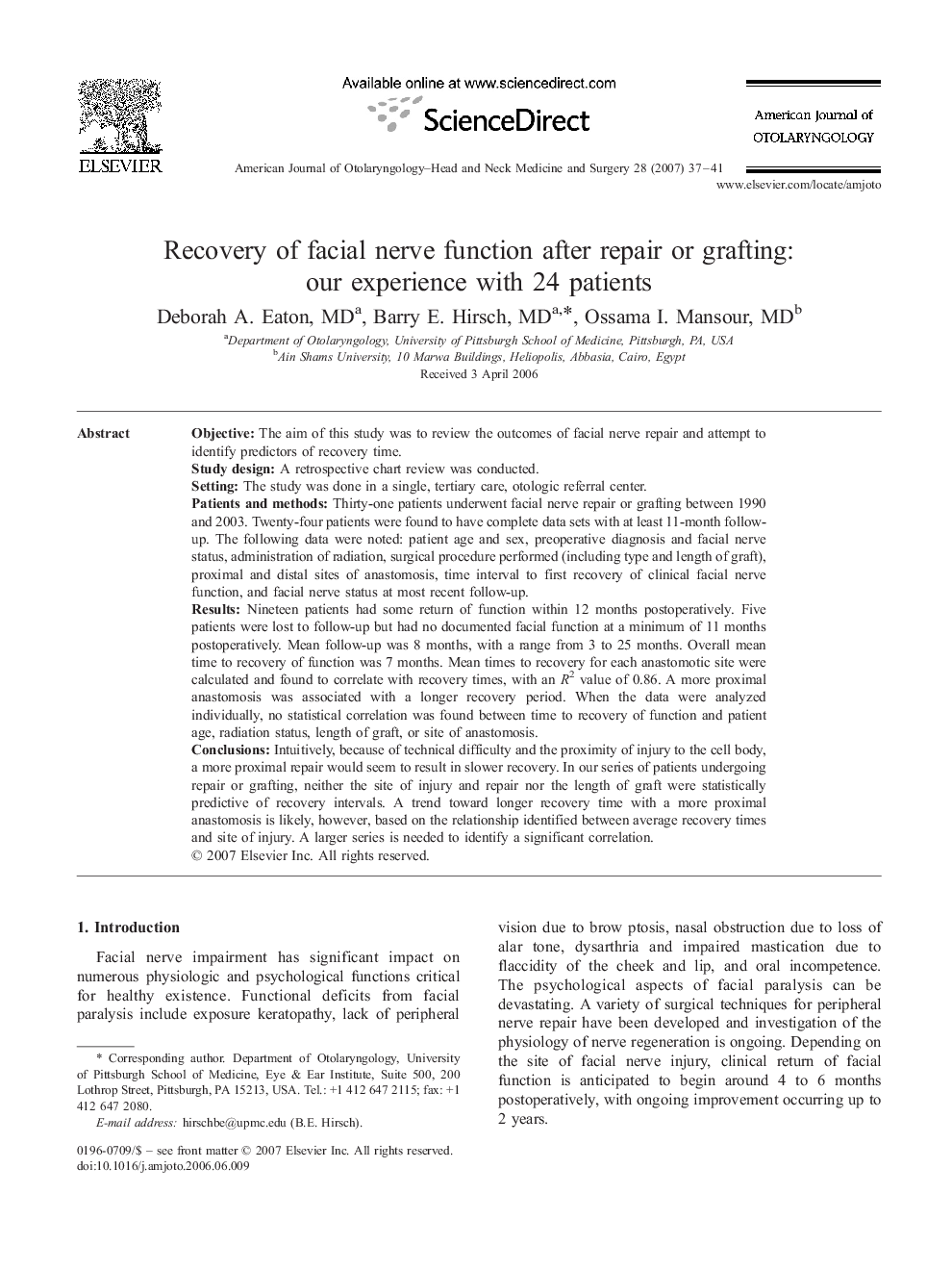| کد مقاله | کد نشریه | سال انتشار | مقاله انگلیسی | نسخه تمام متن |
|---|---|---|---|---|
| 4104636 | 1605287 | 2007 | 5 صفحه PDF | دانلود رایگان |

ObjectiveThe aim of this study was to review the outcomes of facial nerve repair and attempt to identify predictors of recovery time.Study designA retrospective chart review was conducted.SettingThe study was done in a single, tertiary care, otologic referral center.Patients and methodsThirty-one patients underwent facial nerve repair or grafting between 1990 and 2003. Twenty-four patients were found to have complete data sets with at least 11-month follow-up. The following data were noted: patient age and sex, preoperative diagnosis and facial nerve status, administration of radiation, surgical procedure performed (including type and length of graft), proximal and distal sites of anastomosis, time interval to first recovery of clinical facial nerve function, and facial nerve status at most recent follow-up.ResultsNineteen patients had some return of function within 12 months postoperatively. Five patients were lost to follow-up but had no documented facial function at a minimum of 11 months postoperatively. Mean follow-up was 8 months, with a range from 3 to 25 months. Overall mean time to recovery of function was 7 months. Mean times to recovery for each anastomotic site were calculated and found to correlate with recovery times, with an R2 value of 0.86. A more proximal anastomosis was associated with a longer recovery period. When the data were analyzed individually, no statistical correlation was found between time to recovery of function and patient age, radiation status, length of graft, or site of anastomosis.ConclusionsIntuitively, because of technical difficulty and the proximity of injury to the cell body, a more proximal repair would seem to result in slower recovery. In our series of patients undergoing repair or grafting, neither the site of injury and repair nor the length of graft were statistically predictive of recovery intervals. A trend toward longer recovery time with a more proximal anastomosis is likely, however, based on the relationship identified between average recovery times and site of injury. A larger series is needed to identify a significant correlation.
Journal: American Journal of Otolaryngology - Volume 28, Issue 1, January 2007, Pages 37–41